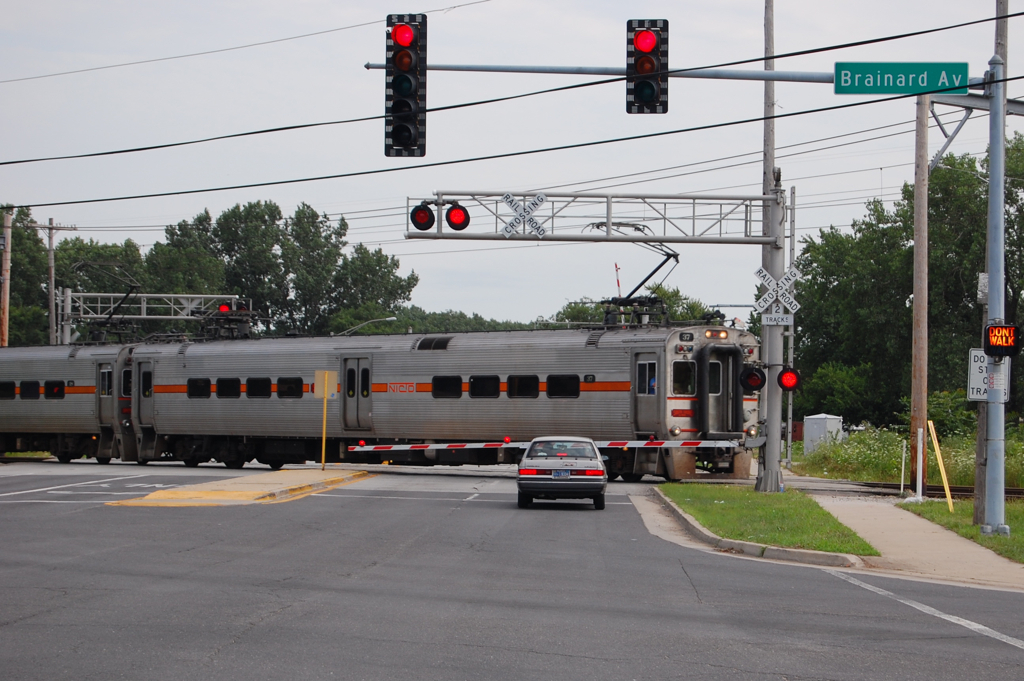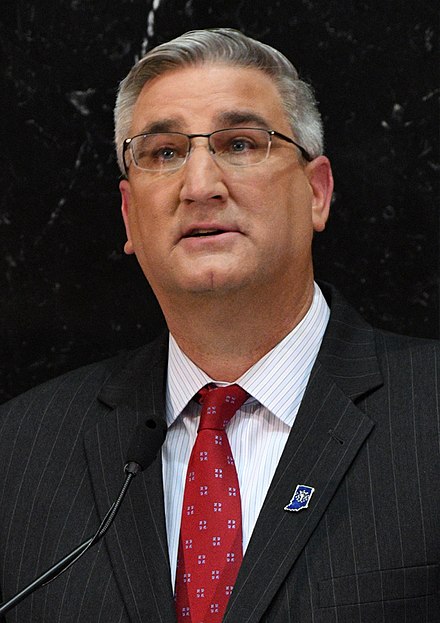For over a century, residents of Hegewisch, a working-class neighborhood at Chicago’s southeast corner, have relied on the South Shore Line commuter railroad to get them to the Loop, Hyde Park and destinations throughout northwest Indiana. But decisions about how the line is run are largely made in Indiana.
The line is operated by the Northern Indiana Commuter Transportation District, which includes the four Indiana counties the line serves: Lake, Porter, La Porte, and St. Joseph. Until recently, each county appointed two trustees to NICTD's governing board, one from the county board of commissioners and one from a county council. The governor of Indiana appointed three more.
But a recent bill, associated with efforts to help the South Shore Line get funding for two major projects, radically overhauled the appointment process, reducing the NICTD board to five members. Four will be appointed by the Indiana governor, and the Indiana Department of Transportation commissioner will now serve as its chair. Current Indiana Governor Eric Holcomb signed it into law on April 30. And while South Shore Line management has described the change as being positive overall, the individual commissioners were divided on the issue. La Porte county is going so far as to look into its legal options to resist the change.
The South Shore is one of four transit systems serving the Chicago area, including the CTA, Pace, and Metra. The Illinois governor's only has direct influence on selecting the CTA board, choosing three directors, while the Chicago Mayor gets to pick four.
As for Metra's Board of Directors, one member is appointed by the Chicago mayor, six are appointed by the heads of the six counties that make up the Regional Transportation Authority district, and four are appointed by the Cook County board.
Pace's board is selected in a similar manner, with the Cook County board appointing six members, and the chair being appointed by consensus between the Cook County board and the six county executives.
For the RTA’s board, the Chicago mayor get to appoint five members, and the chair is elected by the board directors instead of being appointed.
Since NICTD is an Indiana transit agency, Illinois elected officials don’t have any say selecting board members. But Metra has some has some influence on how the Chicago portion of the South Shore Line operates. NICTD pays Metra for the right to use the Metra Electric line tracks, while Metra helps NICTD cover the cost of the Chicago portion of the service.
Under the most recent agreement, NICTD currently pays $7.3 million million, with the fee increasing by 2.75 percent every year until 2024. Metra pays $3.7 million a year. Most of the Hegewisch station commuter parking lots are owned by Metra. And Hegewisch station follows Metra's fare structure, so when Metra raises its fares, Hegewisch fares go up automatically, regardless of whether or not NICTD is raising fares on the rest of the line.
Under the current schedule, it takes Hegewisch riders 35 minutes to reach Millennium Station. The other connections are longer and less direct. Riders can take CTA's #30 South Chicago bus to either the 93rd Street/South Chicago station on the Metra Electric Line South Chicago branch, or take the route all the way to its northern terminus at the 69th Street Red Line station.
This helps explain why, historically, Hegewisch has been one of the South Shore Line’s top five busiest stations. The 2018 South Shore Line rider survey states that, while the Hegewisch lost some riders that year, it is the fifth busiest station on the line.
NICTD is currently trying to get two major projects off the ground. It is looking to double-track the mostly single-track segment of the South Shore Line between Gary and Michigan City, Indiana, which will allow it to run more trains and reduce delays. And the agency hopes to build the new West Lake branch to serve southern Hammond and the towns of Munster and Dyer. It is currently looking to secure matching funds from the Federal Transit Administration.
Indiana already committed $12 million a year to these projects. As part of a broader two-year budget bill, the state’s General Assembly agreed to kick in up to $205 million more to ensure that these initiatives will move forward, even if the Federal Transit Administration doesn't chip in as much funding for the project as hoped for.
But the additional state funding coincided with the NITCD board reorganization. The four appointees will be required to be elected officials -- one per each of the four NITCD counties. And while the board has historically been formally non-partisan, the new law explicitly requires that it has two Democrats and two Republicans. Lake and Saint Joseph Counties went blue in the last presidential election, while Porter and LaPorte went red.
South Shore Line president Michael Noland said the Indiana General Assembly saw the restructuring as a fair exchange for the extra funding. “The leadership of the General Assembly decided that, given all the money the state is putting into the project and into the railroad, [they would] restructure the board so that they will have more involvement,” he said, noting that neither the NICTD board nor the agency's staff had any involvement in the drafting of that particular provision.
Noland put a positive spin on the change, saying that he personally looked forward to working with the INDOT commissioner and that, for the trustees, it wasn’t all bad. “I can tell you that the current members are disappointed, because they take great pride [in their service]. And they’re thrilled that they got additional money [for the rail projects.]" He added that, given that all of the current county-appointed representatives are elected officials, Holcomb can reappointing some of them if he chooses.
Local media coverage suggests that the reaction from the trustees has been a mixed bag, with some of them expressing optimism and some grumbling about losing local control and questioning the nature of the process. Porter county council President Dan Whitten, one of the two trustees representing Porter County told the Chesterton Tribune that while he wouldn’t “lose sleep” over what happened, he wasn’t happy with it, either. “I think the county council and commissioners have more of an understanding of county government than the governor does, so it seems odd that he would remove appointing authority from a body that has a hands-on understanding.”
The La Porte County Board of Commissioners went a step further. During its May 1 meeting, it approved a resolution decrying the change and contracting Indianapolis-based law firm Cohen & Malad to see what legal options they would have to oppose the change and retain local control.
While the change took effect immediately, as of May 10 Governor Holcomb is yet to name his appointments to the NICTD board. Noland said he hasn’t been given any information on when the appointments might take place, but he expects it to happen before the next NICTD board meeting on May 31.
Active Transportation Alliance spokesman said that his organization wasn’t familiar enough with the NICTD board appointment policy change matter to comment on it. But he emphasized that his organization values the service the railroad provides. “The South Shore Line provides an important connection between Chicagoland and Northwest Indiana,” he said. “We recently worked with other advocates to encourage NICTD to allow bikes on trains, which people across the region are enjoying. It is critical to maintain and upgrade service to Hegewisch given its physically isolated from much of the city and the fact that its residents lack quality transportation options.”







